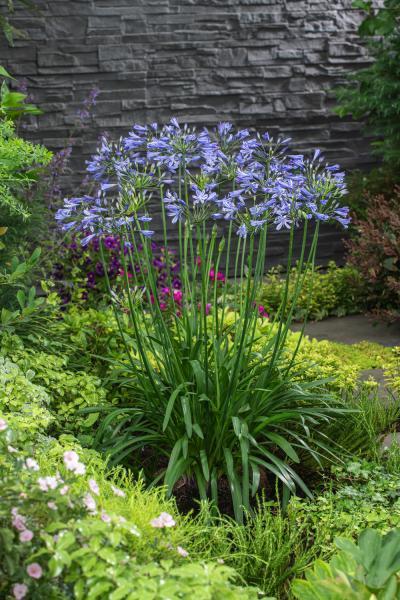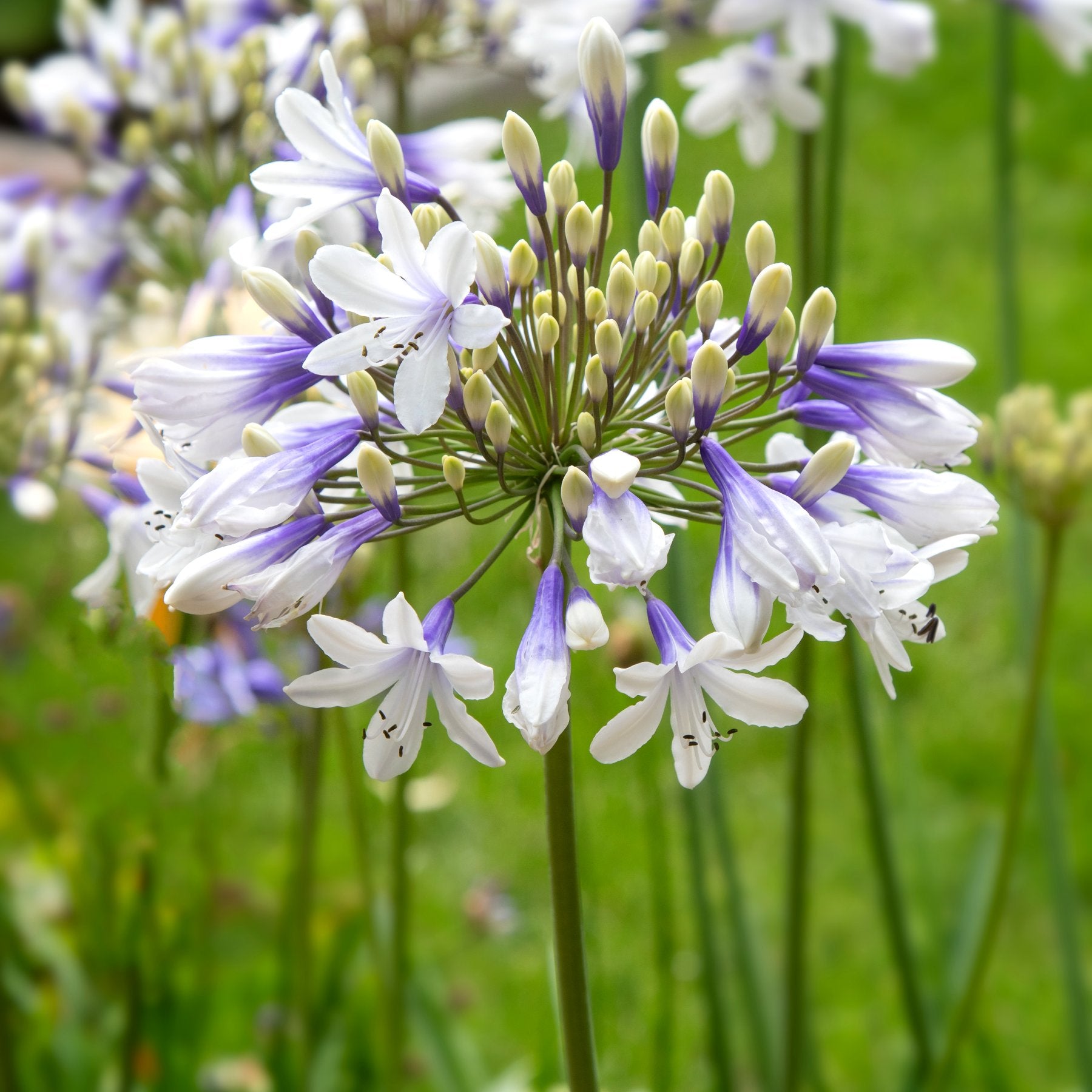Sensational Agapanthus: Enhancing Your Yard's Appeal
Sensational Agapanthus: Enhancing Your Yard's Appeal
Blog Article
Releasing the Secret to Successful Agapanthus Farming: Idea for a Flourishing Yard
In the world of gardening, cultivating agapanthus successfully calls for a strategic technique that encompasses different aspects of plant treatment. By comprehending the nuances of agapanthus farming, one can produce a setting where these plants prosper and grow perfectly.
Growing Agapanthus: Ideal Practices
When planting Agapanthus, correct soil prep work is necessary for guaranteeing successful development and development of these beautiful flowers. Agapanthus, generally called Lily of the Nile or African lily, thrives in well-draining dirt with a somewhat acidic to neutral pH level - Agapanthus. Before growing, it is crucial to modify heavy clay dirts with raw material such as garden compost or peat moss to improve water drainage and offer crucial nutrients for the plants
To plant Agapanthus, choose an area that obtains full sunlight to partial color, as this will certainly promote healthy and balanced growth and plentiful blooming. Dig an opening twice the size of the plant's root ball and position the Agapanthus at the exact same deepness it was formerly expanding. Delicately backfill the hole with soil, pushing down firmly to eliminate any air pockets around the roots.
Water the freshly planted Agapanthus extensively and proceed to maintain the dirt equally moist, particularly throughout the plant's energetic expanding season. Agapanthus. Applying a balanced plant food once a month can better sustain the plant's development and flowering. By adhering to these finest practices for planting Agapanthus, you can create a sensational display screen of these captivating flowers in your yard
Ideal Soil Issues for Agapanthus
For optimal development and flowering success of Agapanthus plants, guaranteeing the soil conditions are suitable is vital. Agapanthus prefers soil that is abundant in nutrients, so integrating a balanced fertilizer during the growing period can advertise healthy and balanced development and dynamic blooms.

Watering and Feeding Tips
To make certain healthy and balanced development and dynamic flowers, proper watering and fertilizing strategies are crucial for effective Agapanthus growing. Agapanthus plants benefit from regular watering, specifically throughout the growing season.
When it comes to feeding Agapanthus, a balanced fertilizer with equivalent components nitrogen, phosphorus, and potassium can be applied in resource the spring to advertise healthy and balanced growth and blooming. Slow-release plant foods are perfect for giving nutrients slowly over an extended duration. Prevent over-fertilizing, as this can bring about too much foliage growth at the expenditure of blossoms.
Furthermore, integrating raw material like compost right into the soil can enhance nutrient degrees and improve dirt structure, helping in the general health and wellness of the Agapanthus plants. By complying with these watering and fertilizing ideas, garden enthusiasts can ensure their Agapanthus plants flourish and produce magnificent display screens of flowers.
Trimming and Deadheading Methods
Correct pruning and deadheading strategies play an essential duty in keeping the health and wellness and aesthetics of Agapanthus plants, matching the original site important techniques of watering and fertilizing for effective cultivation. Pruning Agapanthus entails eliminating spent flower heads, yellowing or dead leaves, and overall shaping of the plant to advertise much better growth. Deadheading, the process of getting rid of faded flowers, not just improves the plant's appearance but also motivates more growing.
When deadheading Agapanthus, it is a good idea to clip off the flower stem at the base using sharp, tidy shears. This process reroutes the plant's power from seed manufacturing back into root and foliage growth, promoting a much healthier and extra robust plant. Routine deadheading can expand the growing period of Agapanthus and avoid self-seeding, which can cause congestion.
In regards to pruning, Agapanthus generally gain from a light trim after flowering to tidy up the plant his explanation and motivate fresh growth. Cutting back the spent flower stems and eliminating any dead or damaged foliage helps maintain the plant's vitality and general appearance. Nevertheless, it is necessary to prevent cutting into the crown of the plant, as this can weaken its health.

Protecting Agapanthus From Vermins and Diseases
Applying effective parasite and disease monitoring strategies is vital to guarding the health and wellness and vigor of Agapanthus plants in cultivation. One common insect that influences Agapanthus is the Agapanthus borer, a caterpillar that passages into the plant, triggering damages to the leaves and blossoms.
In addition to parasites, Agapanthus are susceptible to illness such as origin rot and fungal leaf spots. These concerns can typically be prevented by ensuring proper water drainage and preventing overwatering. If indicators of condition appear, affected parts of the plant must be promptly removed to stop further spread. Fungicides may also be utilized as a treatment procedure, complying with the supplier's guidelines carefully. By staying watchful and attending to bug and illness concerns promptly, garden enthusiasts can help their Agapanthus flourish and thrive.

Conclusion
In verdict, successful growing of agapanthus calls for proper growing strategies, optimal dirt problems, appropriate watering and feeding, regular trimming and deadheading, and security from conditions and pests. By complying with these tips and tricks, gardeners can make certain a growing yard full of gorgeous agapanthus flowers. Agapanthus. Keep in mind to maintain constant treatment and interest to information to promote the health and wellness and durability of these magnificent plants
When growing Agapanthus, correct soil preparation is necessary for making sure effective growth and development of these stunning blossoms.Water the recently planted Agapanthus extensively and proceed to maintain the soil uniformly damp, specifically throughout the plant's energetic expanding period.For optimum development and growing success of Agapanthus plants, ensuring the soil problems are ideal is essential. When growing or transplanting Agapanthus, guarantee the dirt is well-prepared to supply the needed structure for the plants to establish themselves efficiently. One common bug that impacts Agapanthus is the Agapanthus borer, a caterpillar that passages right into the plant, creating damages to the blossoms and fallen leaves.
Report this page